-

-
-
Cosmos: A Personal Voyage : Season 1
-
Air date: 28 Sep '80 - 13 episodesCosmos: A Personal Voyage is a thirteen-part television series written by Carl Sagan, Ann Druyan, and Steven Soter, with Sagan as presenter. It was executive-produced by Adrian Malone, produced by David Kennard, Geoffrey Haines-Stiles and Gregory Andorfer, and directed by the producers, David Oyster, Richard Wells, Tom Weidlinger, and others. It covered a wide range of scientific subjects, including the origin of life and a perspective of our place in the universe. The series was first broadcast by the Public Broadcasting Service in 1980 and was the most widely watched series in the history of American public television until The Civil War. As of 2009, it was still the most widely watched PBS series in the world. It won an Emmy and a Peabody Award and has since been broadcast in more than 60 countries and seen by over 500 million people. A book was also published to accompany the series.
-
-
List of Episodes (13)
-
Cosmos: A Personal Voyage (1980)
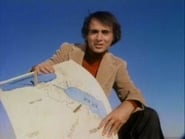
-
1. The Shores of the Cosmic Ocean
28 Sep '80At the beginning of this cosmic journey across space and time, Dr. Carl Sagan takes us to the edge of the universe aboard a spaceship of the imagination. Through beautiful special effects, we witness quasars, exploding galaxies, star clusters, supernovas and pulsars. Returning to our solar system, we enter a re-creation of the Alexandrian Library, the seat of learning on Earth 2,000 years ago.
-
Cosmos: A Personal Voyage (1980)

-
2. One Voice in the Cosmic Fugue
05 Oct '80Dr. Sagan's cosmic calendar makes the history of the universe understandable and frames the origin of the Earth and the evolution of life. We see the evolutionary process unfold, from microbes to humans. Our understanding of how life developed on Earth enables us to venture to other worlds for imaginative speculations on what forms life might take elsewhere.
-
Cosmos: A Personal Voyage (1980)

-
3. The Harmony of the Worlds
12 Oct '80This episode is a historical re-creation of the life of Johannes Kepler, the last scientific astrologer, the first modern astronomer and the author of the first science fiction novel. Kepler provided the insight into how the moon and the planets move in their orbits and ultimately how to journey to them. It's also a story about the scientific process of discovery, and how the search for truth is never easy but always worthwhile.
-
Cosmos: A Personal Voyage (1980)
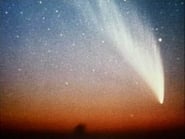
-
4. Heaven and Hell
19 Oct '80A descent through the hellish atmosphere of Venus to explore its broiling surface serves as a warning to our world about the possible consequences of the increasing greenhouse effect. Then Dr. Sagan leads us on a tour of our solar system to see how other heavenly bodies have suffered from various cosmic catastrophes.
-
Cosmos: A Personal Voyage (1980)
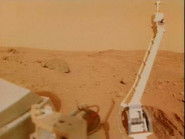
-
5. Blues for a Red Planet
26 Oct '80Is there life on Mars? Dr. Sagan takes viewers on a tour of the red planet first through the eyes of science fiction authors, and then through the unblinking eyes of two Viking spacecrafts that have sent thousands of pictures of the stunning Martian landscape back to Earth since 1976. Though based on older Mars missions, Sagan's analysis still holds true.
-
Cosmos: A Personal Voyage (1980)

-
6. Traveller's Tales
02 Nov '80Dr. Sagan compares the exhilaration of 17th-century Dutch explorers who ventured in sailing ships halfway around our planet in their quest for wealth and knowledge to an inside view of the excitement around Voyager's expeditions to Jupiter and Saturn. The newly acquired treasures of our present golden age of exploration are the focus of this episode.
-
Cosmos: A Personal Voyage (1980)

-
7. The Backbone of Night
09 Nov '80Humans once thought the stars were campfires in the sky and the Milky Way "the backbone of night." In this fascinating segment Dr. Sagan takes us back to ancient Greece, when the basic question "what are the stars?" was first asked. He visits the Brooklyn elementary school of his childhood, where this same question is still on students' minds.
-
Cosmos: A Personal Voyage (1980)
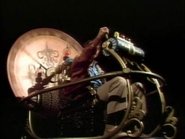
-
8. Travels in Space and Time
16 Nov '80A voyage to see how star patterns change over millions of years is followed by a journey to the planets of other stars, and a look at the possibility of time travel. This takes us to Italy, where a young Albert Einstein first wondered what it would be like to ride on a beam of light.
-
Cosmos: A Personal Voyage (1980)
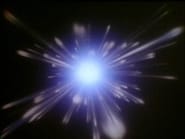
-
9. The Lives of the Stars
23 Nov '80Using computer animation and amazing astronomical art, Dr. Sagan shows how stars are born, live, die and sometimes collapse to form neutron stars or black holes. We then journey into the future to witness "the last perfect day on Earth," 5 billion years from now, after which the sun will engulf our planet in the fires of its death throes.
-
Cosmos: A Personal Voyage (1980)

-
10. The Edge of Forever
30 Nov '80Dr. Sagan leads us on some awesome trips — to a time when galaxies were beginning to form, to India to explore the infinite cycles of Hindu cosmology, and to show how humans of this century discovered the expanding universe and its origin in the big bang. He disappears down a black hole and reappears in New Mexico to show us an array of 17 telescopes probing the farthest reaches of space.
-
Cosmos: A Personal Voyage (1980)
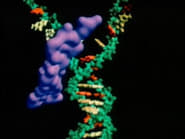
-
11. The Persistence of Memory
07 Dec '80The brain is the focus of this fascinating portion of our journey as Dr. Sagan examines another of the intelligent creatures with whom we share the planet Earth — whales. Then we wind through the maze of the human brain to witness the architecture of thought. We see how genes, brains and books store the information necessary for human survival.
-
Cosmos: A Personal Voyage (1980)
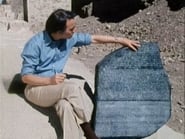
-
12. Encyclopedia Galactica
14 Dec '80Are there alien intelligences? How could we communicate with them? What about UFOs? The answers to these questions take us to Egypt to decode ancient hieroglyphics, to the largest radio telescope on Earth and, in the Spaceship of the Imagination, to visit other civilizations in space. Dr. Sagan answers questions such as: "What is the life span of a planetary civilization?" and "Will we one day hook up with a network of civilizations in the Milky Way galaxy?"
-
Cosmos: A Personal Voyage (1980)
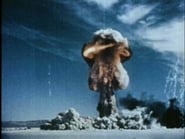
-
13. Who Speaks for Earth?
21 Dec '80Through the use of special effects we retrace the 15-billion-year journey from the big bang to the present. We also hear the tragic story of the martyrdom of Hypatia, the woman scientist of ancient Alexandria. This is the famous episode on nuclear war in which Dr. Sagan argues that our responsibility for survival is owed not just to ourselves, but also to the cosmos, ancient and vast, from which we spring.
-




















